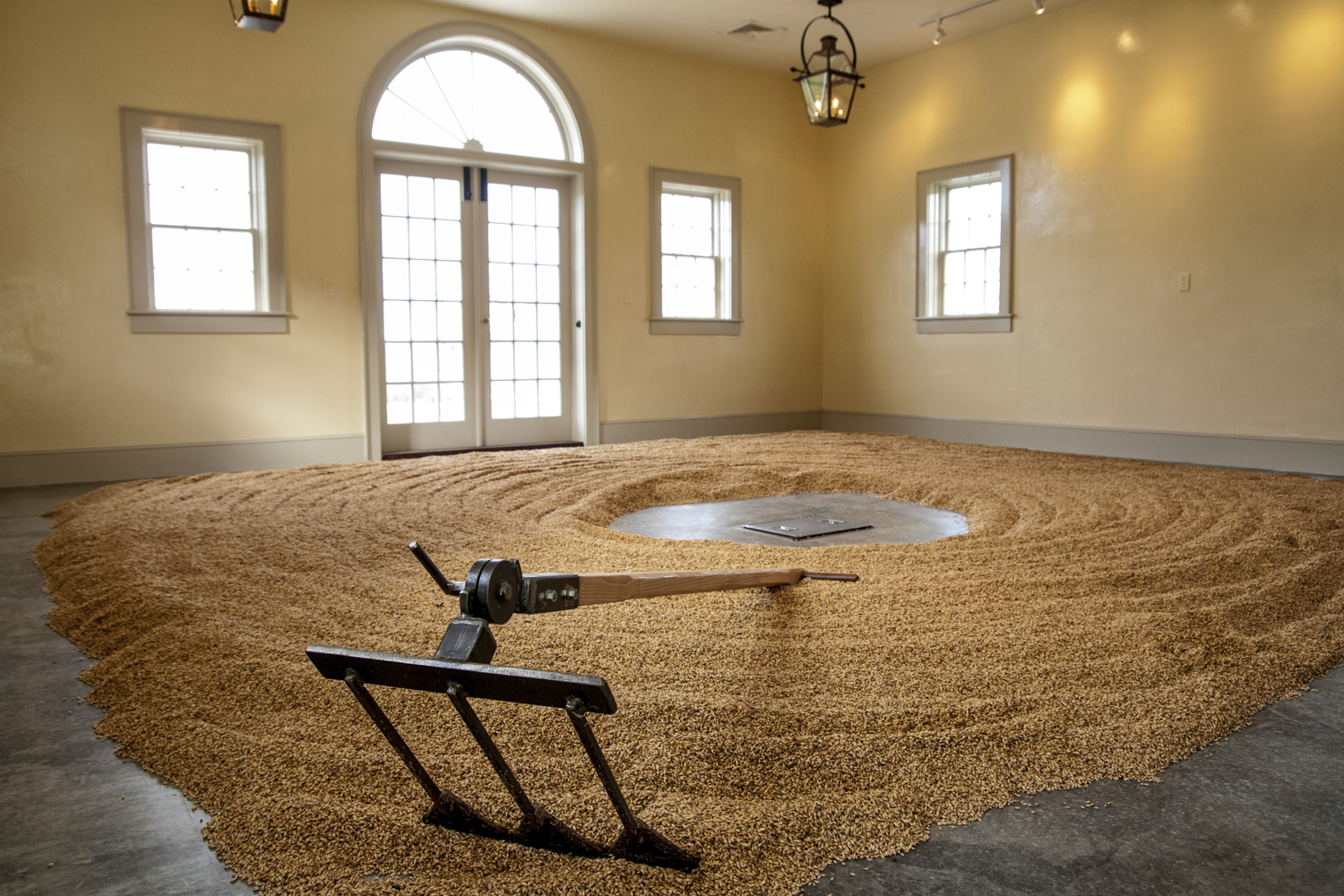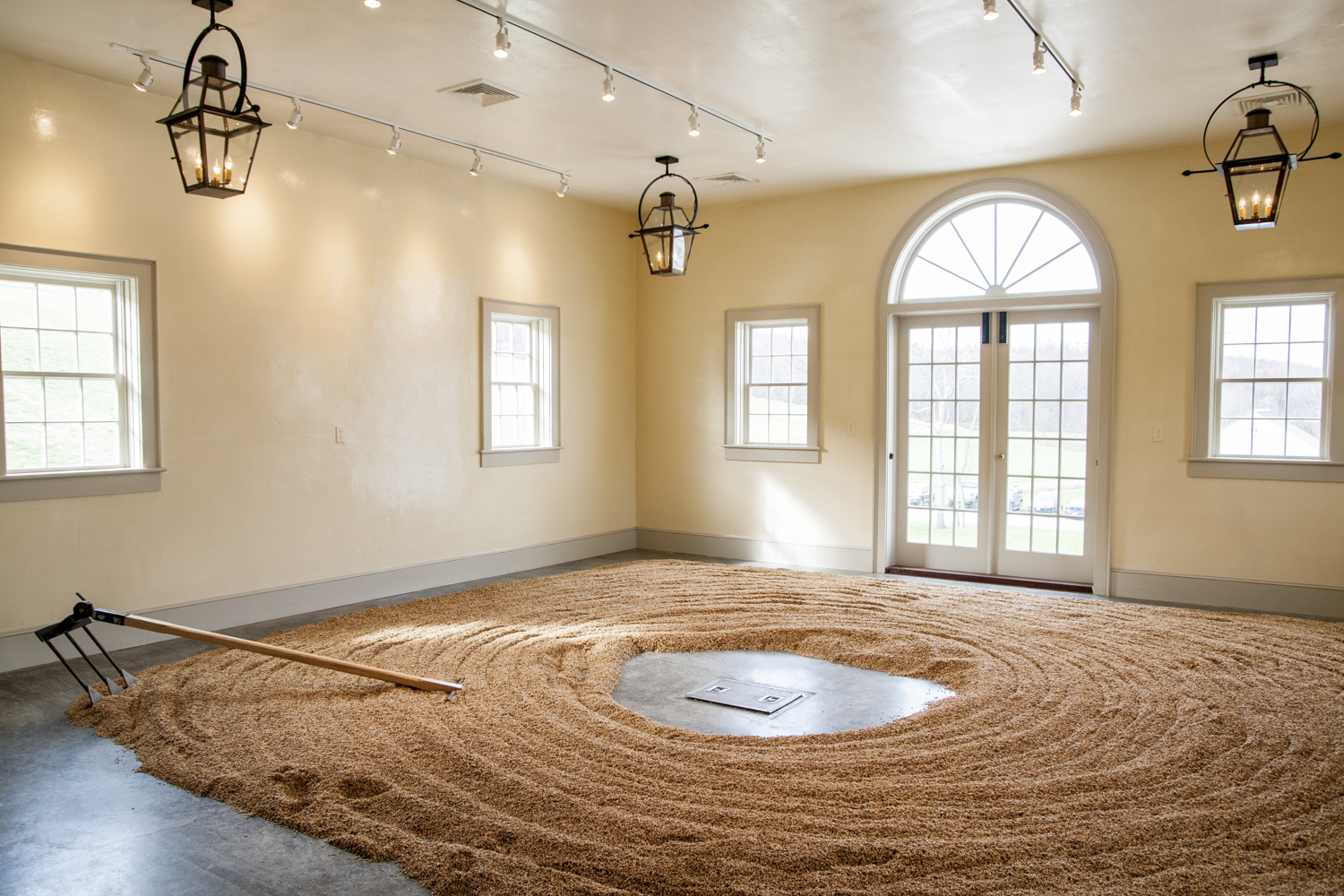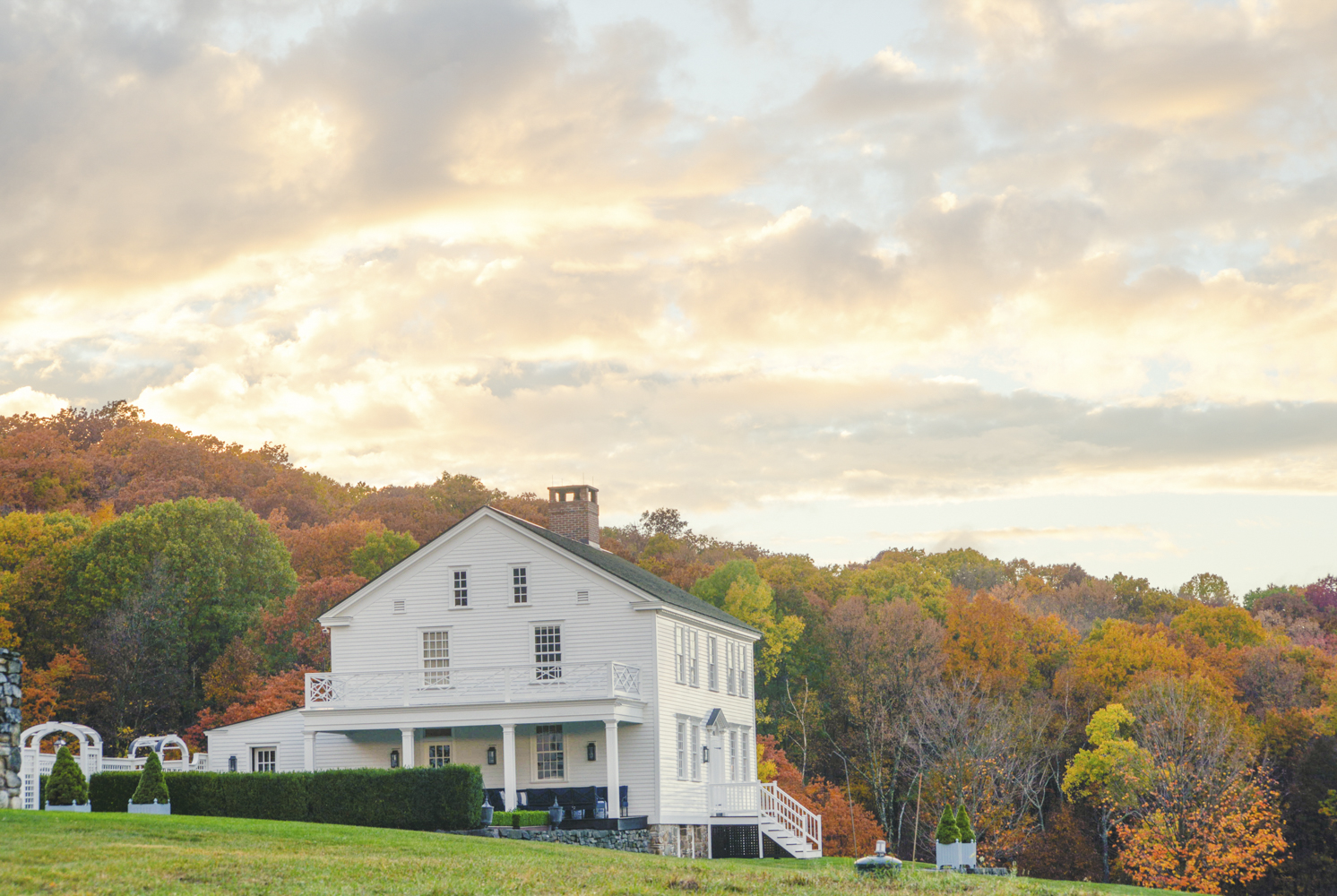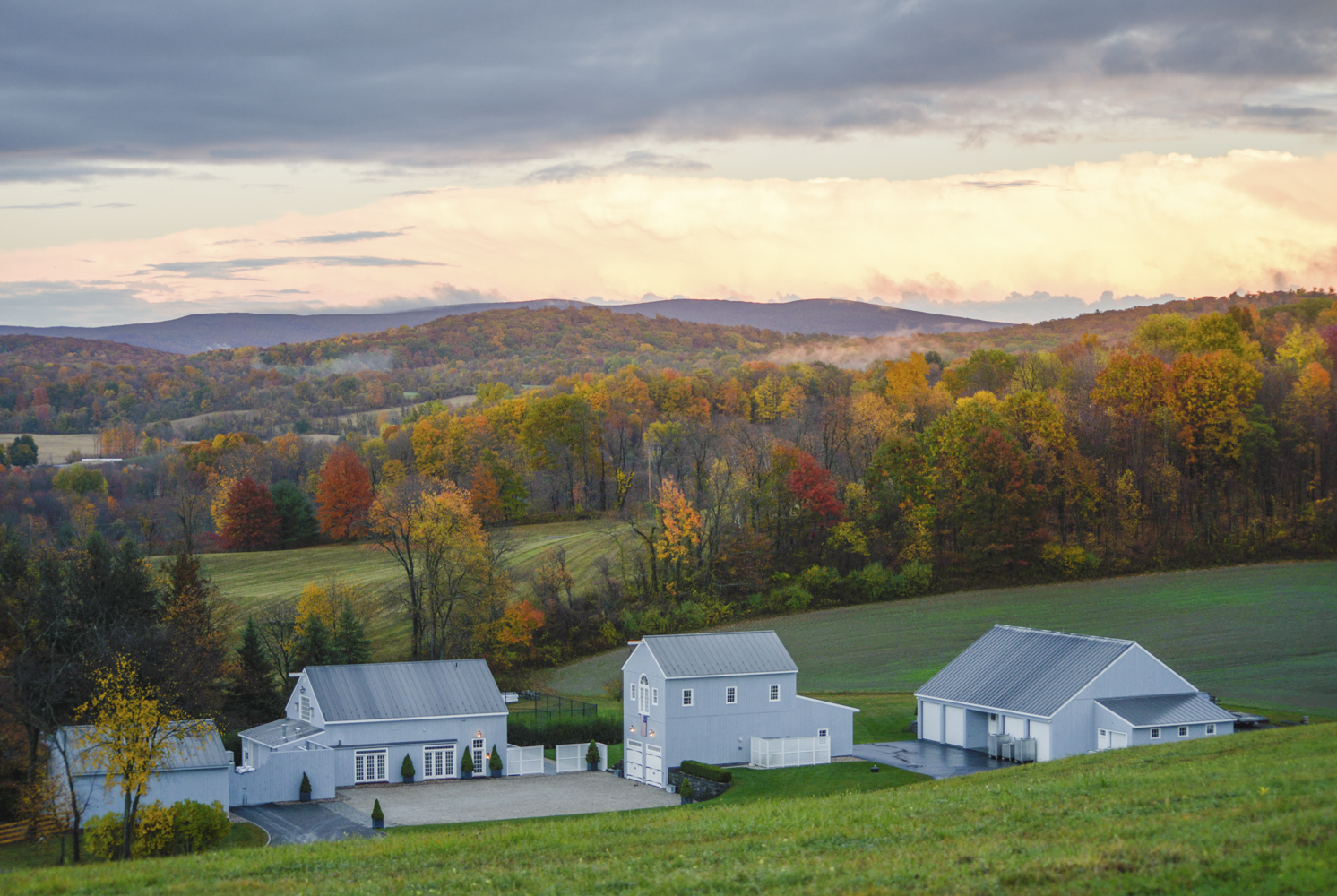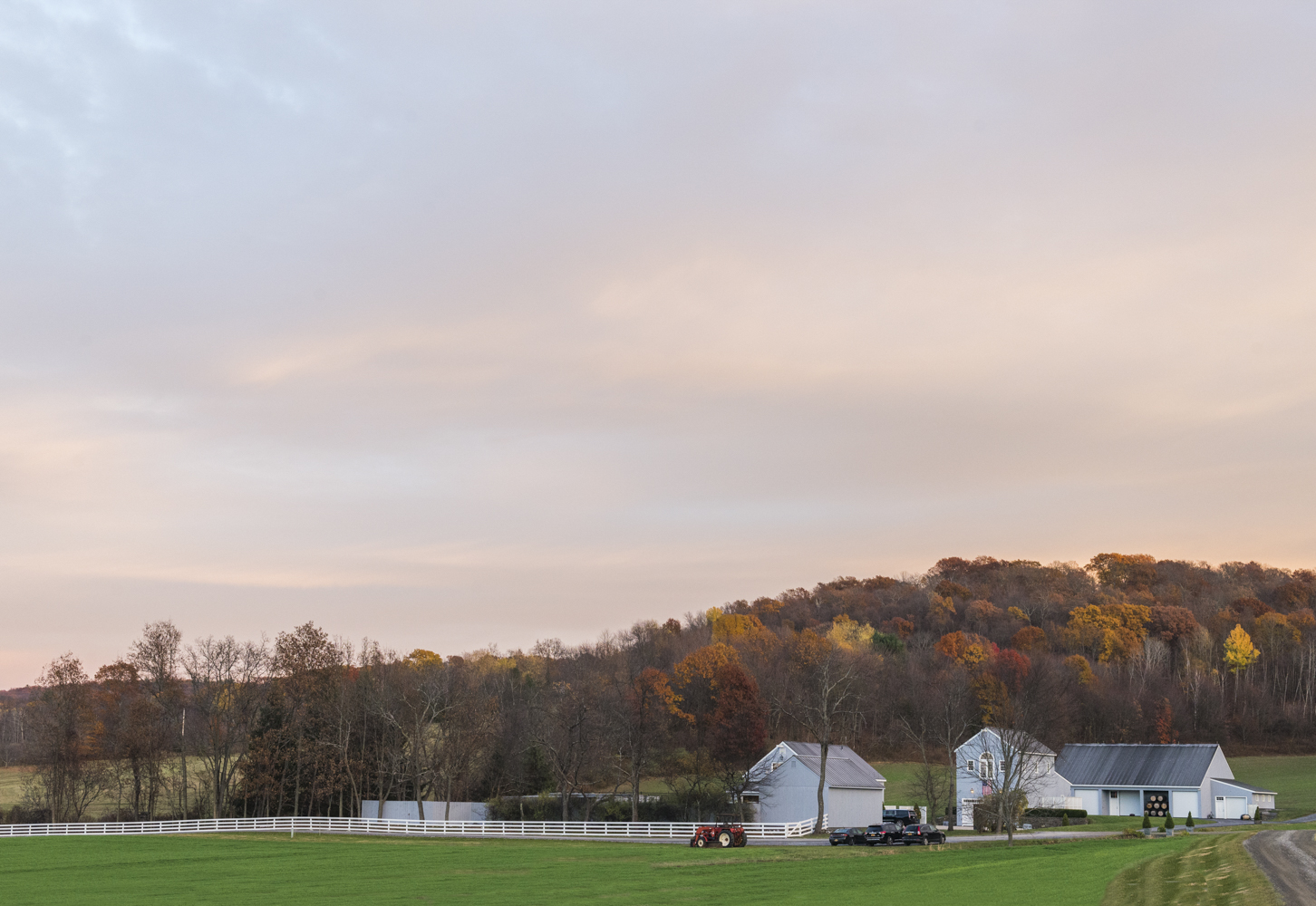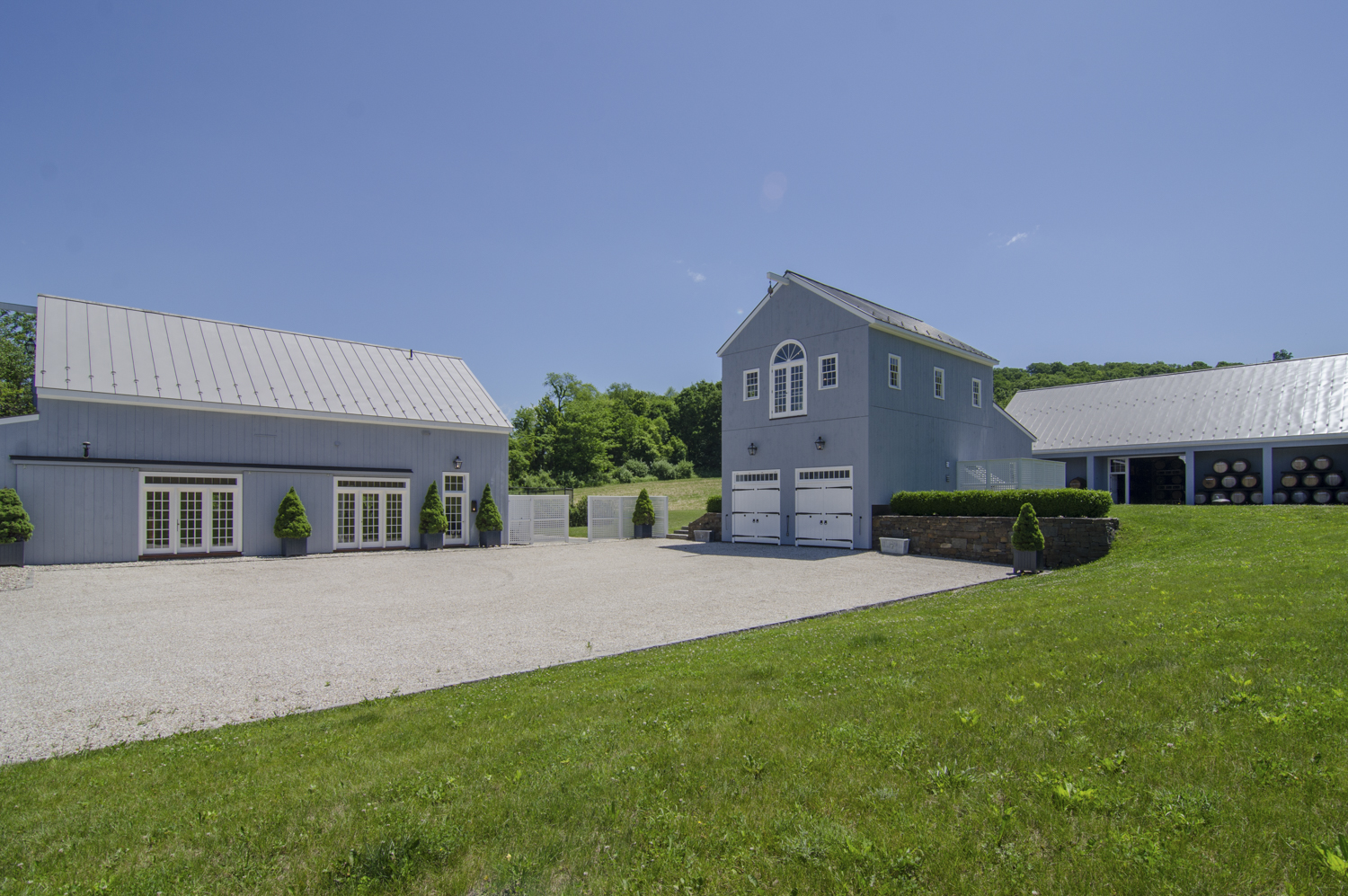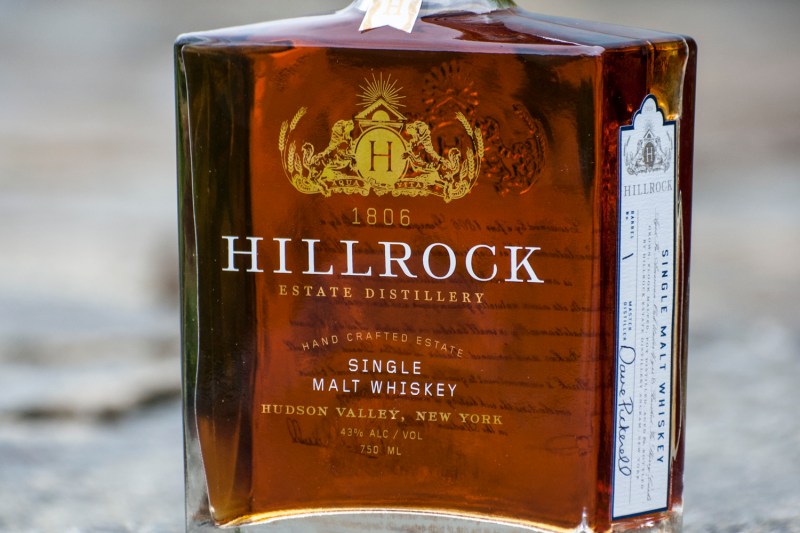
Before Prohibition, upstate New York was home to dozens of estate distilleries where spirits producers harvested grain grown on their own land to make celebrated whiskies and gins. After Prohibition, not only was the region left devoid of such operations, but in fact the nation was without any estate-based distillery until Hillrock Estate Distillery opened its doors in 2011.
Nestled into the rolling hills of Ancram, New York, just over a hundred miles north of New York City, Hillrock Estate Distillery sits on 100 acres of land, many of which are devoted to raising barley, wheat, and rye. (And in fact they own or lease 850 acres of tillable land in total, so watch out for expansion.) The restored Georgian house holding court over the estate was built in 1806 by a grain merchant who had served as a captain in the Revolutionary War. Today within the home you’ll find Jeffrey Baker and Cathy Franklin, the husband and wife who established and own Hillrock and who, with the help of the late Master Distiller Dave Pickerell — top of his class chemical engineer, 14 years with Maker’s Mark, the list goes on — and experienced distiller and winemaker Tim Welly, produce three whiskies that are ranked as world class spirits by leading experts on the field.
We’ll get to the booze in a moment. First, a few more words about what makes this place special.
Jeff Baker, who is a partner in an investment banking firm, which one suspects helped with the establishment of the distillery, had operated Hillrock as a cattle farm for years. He was committed to the local food movement as early as the 1980s. Closer to the turn of the millennium, now a married father and with even more land acquired and added to the estate, Jeff felt himself ready for “another farm-based business, and this time I wanted it to be making a real world-class product.”
He went on to explain how that product ended up being whiskey. “We did a tremendous amount of research about things one could do in our area and during that process I uncovered the fact that New York was producing something like two thirds of the country’s barley in the early 1800s. There was a real tradition of growing grain there, and there were a thousand-plus farm-based distilleries before prohibition. But no one had been doing it since. We saw the whole craft spirits movement taking off, but we saw something missing there. Estate wineries have been around growing all their own grapes to make wine, and we decided we could do the same with grains we grew.”
To make the most of the unique terroir of the Hudson Valley, Jeff and Cathy decided to make their whiskies entirely in situ. And here is where Hillrock truly stands out in the world of American spirits. They grow their grains on the acres around the distillery itself. They harvest the grain, floor malt it, smoke it, distill the spirit, and then age their whiskies all on location. Then they bottle it. By hand. The level of control the Hillrock distillers have over their product is almost peerless, and the results come through in every sip. Which is why those hand-filled bottles have a hundred-dollar price point.
Unlike with a 25-year-old Scotch where, let’s be honest, often you’re paying as much for prestige as you are for flavor, with a Hillrock bourbon, single malt, or rye, you are paying for a liquor you will love. And the pros love it, too: Hillrock’s single malt has been called the best American single malt ever and currently enjoys a 97-point rating with Wine Enthusiast.
But their multi-award-winning Solera Aged Bourbon is the distillery’s flagship, so let’s focus on it in a bit more detail. After the meticulous process covered above, this bourbon is poured into 20-year-old Sherry and Oloroso casks for aging. It doesn’t just sit there, though. The word “solera” in the name refers to a traditional yet rare form of aging wherein the barrels are positioned in a pyramid, with whiskey bottled from a portion drawn from the lowest barrels which are then replenished with younger whiskey from the barrels a tier above. The step-by-step process sees older, mature bourbon mingling with younger whiskey, resulting in a rich and complex blend that’s well worth the spend.
You can find Hillrock’s liquors at various locations throughout the Northeast, the Midwest, and in California, but the best place to enjoy a glass or two is at the distillery itself, looking out over, as Cathy Franklin describes, “the Berkshires, the Connecticuts, the Catskill … it’s truly an amazing, beautiful place.” The views are even better with a bourbon in your hand.




